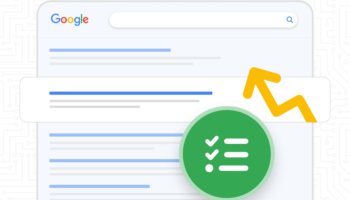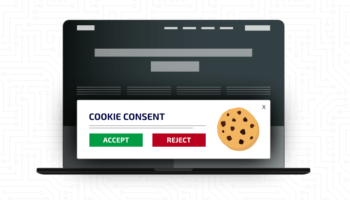Last night I attended a great presentation and discussion called “Search Engine Optimization for Drupal Sites” at TechMaine. Much of what we talked about revolved around website elements that are important for SEO. The CMS tool we used to discuss implementations of SEO solutions was Drupal, but any other CMS or static site would also benefit from an SEO upgrade. When choosing a CMS for your site or evaluating your current system, keep the following “CMS SEO Friendly” checklist handy.
1. Allows Editing of Meta Information
It is important for SEO that each page on your site has a unique title and description. The title is what appears at the top of your browser window and should be a brief and targeted statement about the subject of your page. The meta description is not visible to users on the page, but is used as the brief summary that appears on the search results page.
Both the title and description should include keywords that you have selected for your website. Make sure your CMS gives you the ability to edit these on each individual page so that you can customize them and make sure there are no duplicates.
2. Has Friendly URLs for Content
Often when a CMS is installed the urls will have page id numbers and other system information in them. The ability to have useful urls that reflect page content is a must. Some CMSs allow you to specify what you want in each page url while others automatically use the article name. For example hallme.com/my-great-article is much better than hallme.com/articles.php?id=6054. Just make sure it is informative for both users and search engines.
3. Only One H1 Tag Per Page
The H1 tag is the header that appears in the page content as the title. It is important to have an informative and keyword rich header because this tells visitors what they are about to read and is also one of the first things that spiders crawl on your website. Some CMSs allow for multiple h1 tags or will automatically put the tag around your logo in the header. Others do not use h1 tags at all! You may need to configure your template so that it uses one h1 tag and then uses other tags (h2, h3, etc.) for the rest of the headers.
4. Ability to Edit Page Content
This should be an easy one to check off because if a CMS does not allow you to edit your content then it is really not a CMS. I have included this though because of how important it is to make sure that you use your CMS to create quality content using keywords.
Before even beginning development on your website you should be thinking about what keywords will be used throughout your site. Think about your target audience and what people will be typing in to search engines to find your content. Base your content on those keywords so that visitors see that you have what they want and stay on your site.
Last night the presenter told us that you do not want “false traffic” because you will have a higher bounce rate, so make sure your content is relevant. If you change your web strategy at any time, make sure to go in and edit page content so that it continues to reflect your keywords and calls to action.
5. Easy Site Map Generation
There are two types of site maps; an xml site map that is generated for Google and a site map that is a page on your website with links to all of your content. It is important to have an xml site map submitted to Google so that it is easier for robots to crawl your site. There are programs to create these for you and some CMSs include modules to create xml site maps, which can be handy. Having a visible site map on your website is also important so that users can find information quickly. It can be a pain to update the site map every time a new page is added so try to find a module for your CMS that automatically creates a site map.
6. Access to 301 Redirects
Use 301 redirects on your site to point any old urls to new pages on your site if you are doing a redevelopment. These are also used to point a www domain to a non-www domain or vice-versa. For example www.hallme.com and hallme.com both go to the same page, but if you look up in the url you will notice that the www is always there, even if you typed in the latter. It doesn’t matter which one you use, as long as you pick one and make sure that people can type in both to get to your page. Some CMSs allow you to make that redirect in the system while with others you have to use a .htaccess file. Find out what your CMS does and make sure you are comfortable with it.
How Does Your CMS Rate?
If you were able to check off each point for your CMS then you are doing great! If not, you may not have to dump your CMS, but you should do some research to find out how to apply these important elements. Just remember if your urls, headers, content, and site usability are good for the people who visit you website, then it is good for SEO!





